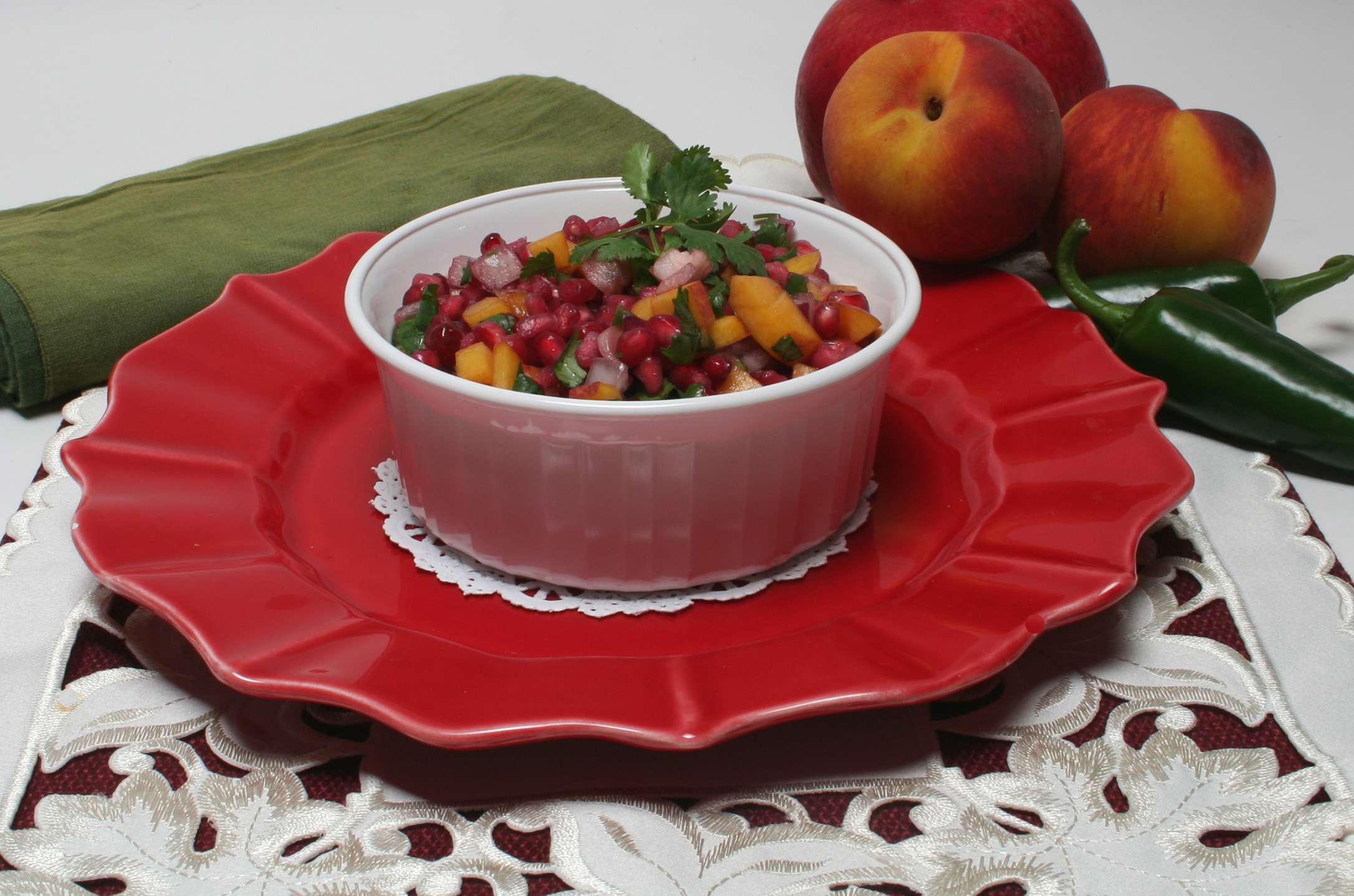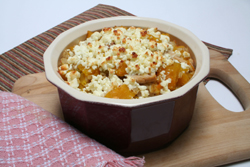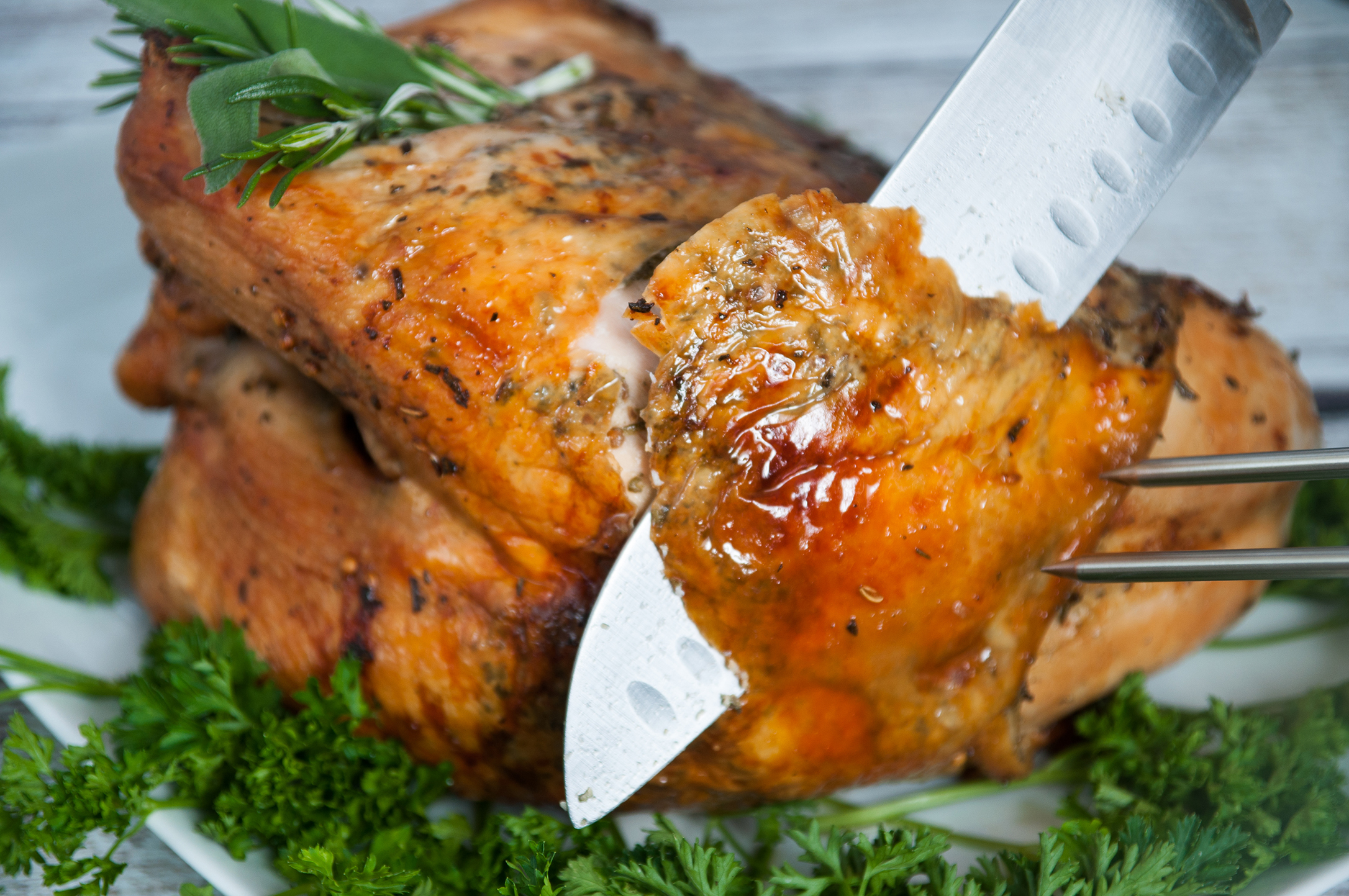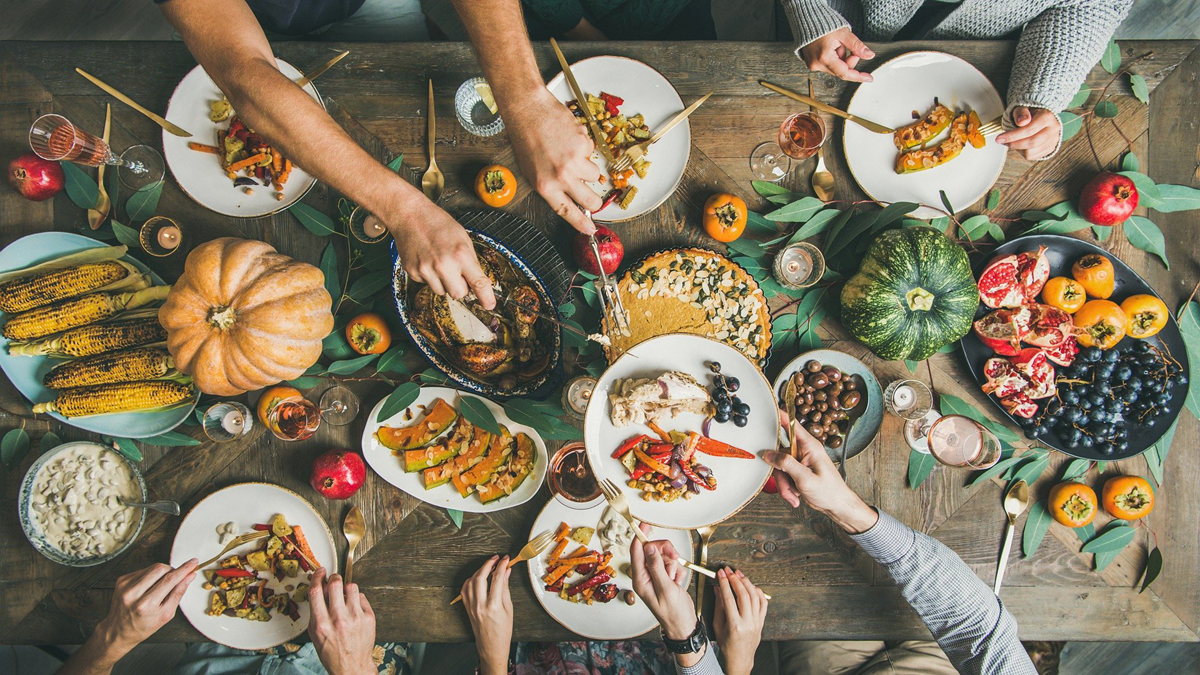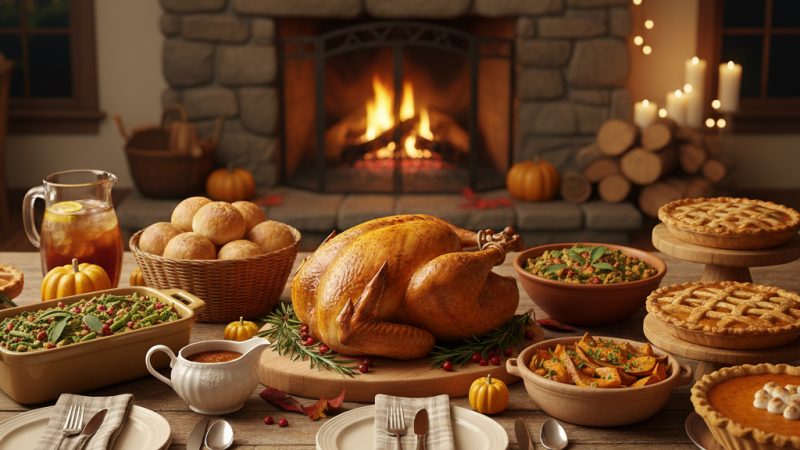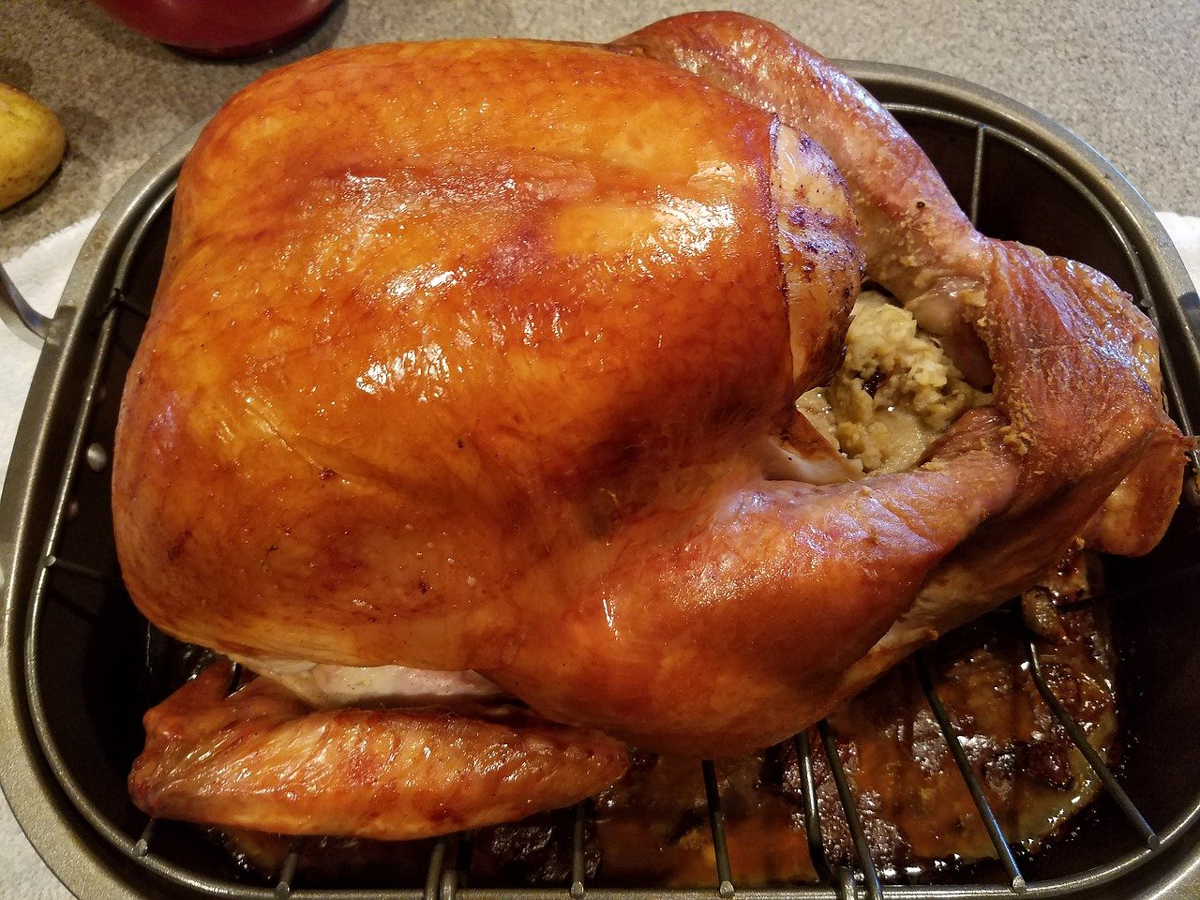Take The Guesswork Out of Roasting a Turkey
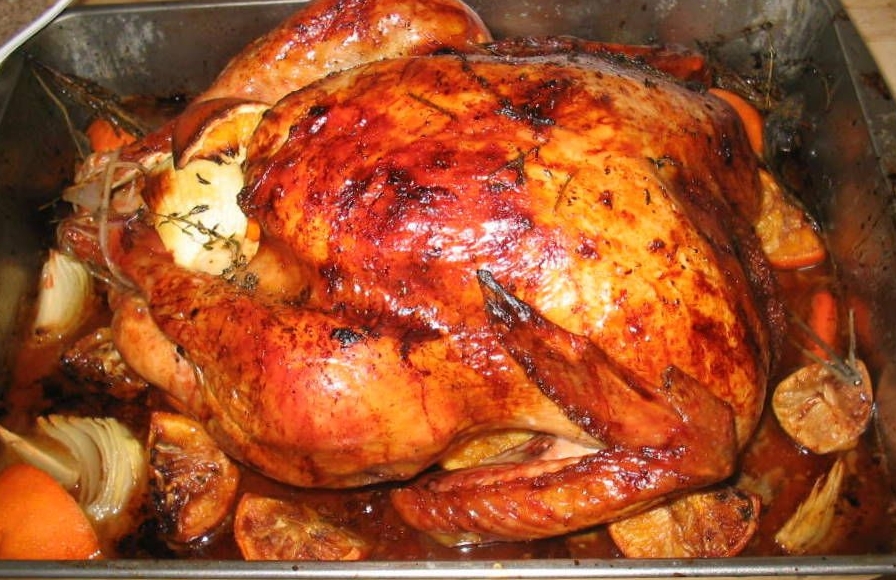
Complete instructions on how to roast a turkey.
BUYING A TURKEY
Frozen
Allow 1 lb. per person. Buy anytime but keep frozen until ready to thaw.
(See Thawing)
Frozen Pre-Stuffed
Allow 1 1/4 lbs. per person. Buy any time. Keep frozen until ready to cook.
DO NOT THAW.
Fresh
1 lb. per person. Buy 1-2 days before cooking.
DO NOT BUY PRE-STUFFED.
THAWING A TURKEY
Thawing Time in the Refrigerator (40 F)
Approximately 24 hours per 5 pounds (Whole Turkey)
8 to 12 pounds 1 to 2 days
12 to 16 pounds 2 to 3 days
16 to 20 pounds 3 to 4 days
20 to 24 pounds 4 to 5 days
Thawing Time in Cold Water
Approximately 30 minutes per pound (Whole Turkey)
8 to 12 pounds 4 to 6 hours
12 to 16 pounds 6 to 8 hours
16 to 20 pounds 8 to 10 hours
20 to 24 pounds 10 to 12 hours
(Change water every 30 minutes)
After thawing, remove neck and giblets from both neck and body cavities, wash turkey inside and out with cold water, drain well. Thawed turkey may remain in refrigerator 1-2 days.
THAWING IN THE MICROWAVE
Check manufacturer’s instructions for the size turkey that will fit into your oven, the minutes per pound and the power level to use for thawing. Cook immediately after thawing.
ROASTING A TURKEY
Timetable for Fresh or Thawed Turkey at 325 F
These times are approximate and should always be used in conjunction with a properly placed thermometer
Unstuffed
8 to 12 pounds 2 3/4 to 3 hours
12 to 14 pounds 3 to 3 3/4 hours
14 to 18 pounds 3 3/4 to 4 1/4 hours
18 to 20 pounds 4 1/4 to 4 1/2 hours
20 to 24 pounds 4 1/2 to 5 hours
Stuffed
8 to 12 pounds 3 to 3 1/2 hours
12 to 14 pounds 3 1/2 to 4 hours
14 to 18 pounds 4 to 4 1/4 hours
18 to 20 pounds 4 1/4 to 4 3/4 hours
20 to 24 pounds 4 3/4 to 5 1/4 hours
ROASTING INSTRUCTIONS
1. Set the oven temperature no lower than 325 F.
2. Place turkey breast-side up on a rack in a shallow roasting pan.
3. For uniform results, it is recommended to cook stuffing outside the bird. If stuffed, stuff loosely.
4. For safety and doneness the internal temperature, as registered on a meat thermometer, must reach a minimum of 180 F in the thigh before removing from the oven. The center of the stuffing should reach 165 F after stand time.
5. Juices should be clear.
Wash hands, utensils, sink and anything else that has contacted raw turkey with hot, soapy water.
6. Let the breast stand 20 minutes before removing stuffing and carving.
ROASTING A TURKEY BREAST
Timetable for Fresh or Thawed
Turkey Breast at 325 F
Unstuffed
4 to 6 pounds 1 1/2 to 2 1/4 hours
6 to 8 pounds 2 1/4 to 3 1/4 hours
Stuffed
4 to 6 pounds Not Usually Applicable
6 to 8 pound 3 to 3 1/2hours
ROASTING INSTRUCTIONS
1. Set oven temperature. no lower than 325 F.
2. Place turkey breast on a rack in a shallow roasting pan.
3. For uniform results, it is recommended to cook stuffing outside of the bird. If stuffed, stuff loosely.
4. For safety and doneness the internal temperature, as registered on meat thermometer, must reach a minimum of 170 F in the thickest part of the breast before removing from the oven. The center of the stuffing should reach 165 F after stand time.
5. Juices should be clear.
6. Let the breast stand 20 minutes before removing stuffing and carving.
STORING LEFTOVERS
Debone turkey and refrigerate all leftovers in shallow containers within 2 hours of cooking. Use leftover turkey and stuffing within 3-4 days, gravy within 1-2 days, or freeze these foods. Reheat thoroughly to a temperature of 165 F or until hot and steaming.
ADDITIONAL ROASTING HINTS
Optional:
1. Tuck wing tips back under shoulders of bird, called “akimbo”
2. Add one-half cup of water to the bottom of the pan.
3. In the beginning, a tent of aluminum foil may be placed over the turkey for the first 1 to 1 1/2 hours, then removed for browning.
4. Or a tent of foil may be placed over the turkey after the turkey has reached a golden brown.
5. In the beginning, an oven-proof thermometer may be placed in the thigh of the turkey to check the internal temperature at intervals during the roasting.
6. Or an instant-read thermometer may be used periodically to check the internal temperature during cooking. After each use, wash the stem section of the thermometer thoroughly in hot, soapy water.
7. Check periodically to see if “pop-up” temperature indicator device has activated indicating that the bird has reached final temperature for safety and doneness. However, it is also suggested that the temperature be checked with a conventional thermometer in several places.
The Author:
For more information about food safety, call USDA’s Meat and Poultry Hotline: 1-800-535-4555
10:00 a.m. to 4:00 p.m. Eastern time, Monday through Friday In the Washington, D.C. area, call (202) 720-3333.
U.S. Department of Agriculture
Food Safety and Inspection Service
Cooperative State Research, Education and Extension Service
14th Street & Independence Ave., S.W.
Washington, D.C. 20250

